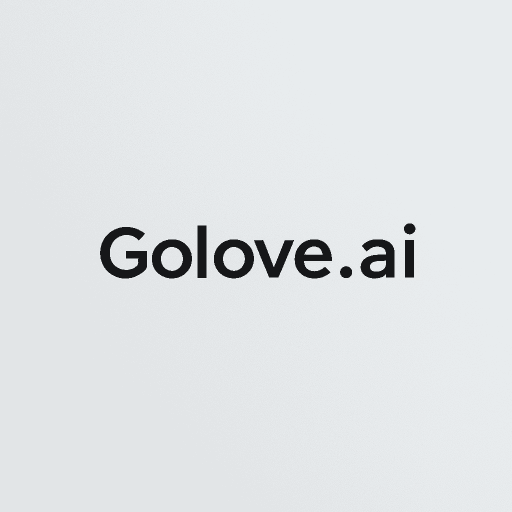Best AI Clothes Remover Apps of 2025 — Top Free & Paid Tools for Users
AI clothes remover technology is no longer just a fun idea. In 2025, artists, designers, and digital creators use these tools to learn about anatomy, make visuals look more interesting, and make realistic changes with little effort.
The newest platforms have great realism, fast rendering, and easy-to-use controls, whether you're working on concept art, fantasy modeling, or visual prototyping.
CortexLab's Ethical Approach
Our guide shows you the best AI clothes remover apps that are also ethical. We've tried out dozens of services to find the best ones in important areas:
- Realism and accuracy in anatomy
- Policies for privacy and auto-deletion
- Depth of features: HD output, stylization
- Mobile access and user experience
- Pricing: free trials, subscriptions, and coin systems
- Disclaimers about responsible use and ethical safeguards
We explain what each app has to offer, from free browser-based tools to expensive platforms with lots of customization options, so you can pick the best one for your creative needs.
1Nudify.Online
Nudify.Online is an AI tool that runs in your browser and uses deep learning to make photo edits that show people without clothes. Quick, easy, and doesn't need to be installed. Only for adults.
2Xnude.ai
It's the cheapest AI clothes remover for adults in 2025. For adults who want ultra-realistic undress edits with a lot of options for customization.
Xnude.ai is a new AI clothes remover that can make undress transformations that are very detailed. Users can choose from styles for men and women, as well as lingerie, swimwear, and tattoos. They can also control their body features very precisely. The platform doesn't support background editing, but it does a great job of being realistic and customizable. Great for artists and professionals who want to make advanced visual changes for the lowest price.
3Golove.ai
Golove.ai is a free AI clothes remover that works in your browser. You don't have to sign up or install anything to use it. You can customize the platform by choosing your body type, age, and image quality, all of which are easy to find and use.
Golove.ai stands out because it has great image quality and can process images in less than 15 seconds thanks to next-generation neural models. This makes it one of the fastest and most realistic tools in its class, perfect for people who want quick, high-quality results without having to deal with complicated technology.
Main points
- Time to process: less than 15 seconds
- Quality of images: one of the best in the field
- Next-gen AI powers it, giving you realistic, accurate, and quick results.
Pricing Plans
30 Stars - $9.99
Great for trying out the platform. Makes about 10 to 15 pictures.
120 Stars - $34.99
Good for everyday use. Makes about 45 to 60 pictures.
500 Stars - $89.99
Great for people who are already good at it. Allows for more than 200 generations of high quality.
4Candy AI
Candy AI is a one-of-a-kind AI that removes clothes through private chat. Instead of uploading pictures, people interact with realistic AI friends who can make pictures of characters without clothes based on text prompts.
Candy AI is different from other image-based tools because it uses a conversational format that is both private and engaging. Users can change the body type, age, personality, and style of their AI characters to make realistic nude portraits that fit their needs. The platform puts privacy and personalization first, which makes it a great choice for adults who want a safe, interactive experience.

Main points
- Text-based undressing through private chat
- You have complete control over how your character looks and acts.
- No need to upload images; all visuals are made by AI.
- Regular updates with new characters and more realistic graphics
Candy AI combines visual generation with emotional interaction to create a new way for AI to take off clothes through conversation and design.
5Ainudez
Ainudez is an AI tool that runs in a web browser and lets users digitally take off clothes from pictures with just a few clicks. Ainudez is one of the easiest ways to make nude pictures with AI because you don't have to sign up, download anything, or install anything.
The platform has easy-to-use customization options that let users change their body type, age, and the quality of the output. Ainudez gives you fast, realistic results right through its web interface, whether you want standard resolution or ultra-HD detail.

Main points
- AI clothes remover that works on the web—no account needed
- Three levels of quality: standard, high, and ultra-high
- You can change the shape of your body, your age, and the clarity of your image.
- A simple, easy-to-use interface that gives you results right away
Ainudez is one of the best free alternatives to DeepNude because it is easy to use and makes high-quality images without sacrificing privacy or convenience.
Legal and Ethical Considerations
AI clothes removal technologies have a lot of power, from making art to making adult content, but they also raise big legal and moral issues. At CortexLab, we put safety, openness, and responsible AI use on all of the platforms we look at first.
Use with Care and Consent
Always get permission from the people in the pictures before using AI tools. Uploading or changing pictures of real people without permission could break privacy laws and the rules of the platform.
Data Protection and Privacy
Many of the apps that were reviewed say they let you use them without logging in or giving your name. But users should still be careful when uploading private photos.
Prohibited Content and Limitations
Making nude content with minors, celebrities, or public figures is very wrong and often against the law. Users may face legal consequences if they use platforms that allow this kind of behavior.
Regional Laws and Platform Responsibility
Different countries have different laws about adult content made by AI. Users are responsible for knowing and following the rules in their area.
CortexLab's Ethical Stance
We support new adult AI tools, but only if they come with ethical protections, user education, and platform accountability. We don't just talk about the good things about a product; we also talk about the bad things so that people can make smart, responsible decisions.
